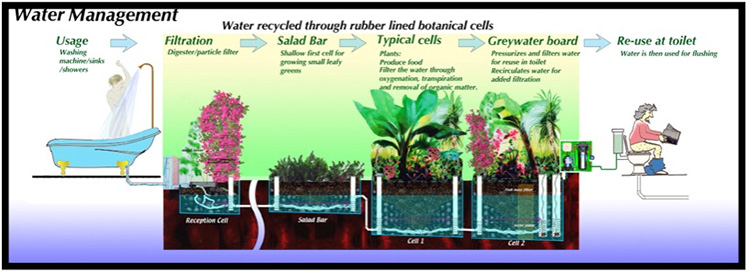A compact, powerful, and cost-effective mini power organizing module to supply enough energy to the DC recirculation pump so it can run 24/7 or manually via a switch.
To build the mini recirculation pump power organizing module, acquire and use the specific components listed below. Availability may vary over time.
Rule 1100 gph non-automatic DC electric bilge pump. An automatic version of this pump is also available which has an automatic-detect function that cycles the pump to check for water every 2.5 minutes or to turn it on manually for constant-on pumping. Since the automatic-detect function is not really very practical or usefull, get the manual-only version of this pump for half the money.
Waterproof single-pole, single-throw SPST switch. To manually turn the bilge pump on and off. If you use the manually-activated Rule pump, you’ll need a single-pole, single-throw (SPST) toggle switch. Make sure these switches are waterproof, or else waterproof them yourself by coating them thoroughly in liquid rubber and screwing a rubber boot over the toggle. Also, it is not mandatory that the switch be a toggle switch, assuming you can find another type of waterproof switch (rocker, push-buttom, etc.) with similar wiring attachments and switch positions.
- Two rolls of 16-gauge marine-grade wire. One red and One black – 25 feet long each.
- Flexible 5-watt solar panel.
- SunGuard 4.5 amp charge controller, to regulate solar panel charging output
- Pelican 1120 case (outer dimensions: 8 1/4″ x 6 1/2″ x 3 5/8”. Model # 1120. IMPORTANT: The Pelican 1120 case will only work if you can find the exact PowerPatrol battery outlined below or smaller. Otherwise, the system will not fit inside this particular model Pelican case and will require a slightly larger model. If in doubt, collect all of the other system components first, then determine the size of the waterproof enclosure you will need.
- Power Patrol 12V battery, 5Ah sealed lead acid (SLA). (dimensions: 4″ x 3 1/2″ x 2 5/8″, $21.99). Model # SLA1055
- “AA” battery tray (x8 or x10)
- 9V snap connector (a pack of 5)
- Crimp-on wire butt connectors
- crimp-on female disconnects
- heat-shrink tubing
- GOOP waterproof glue/sealant (as needed, check your local hardware store)
How to wire each component of the solar-powered battery pack and bilge pump system.
By wiring the system in this manner, you can use the SunGuard charge controller to regulate the solar current to both the core battery and the 10 “AA” batteries. Flip the DPDT switch one way to charge the core battery, or flip it the other way to charge the “AA” batteries.
The 2.5 amp fuse should be wired as closely as possible to the positive terminal of the core battery in order to protect the rest of the system (especially the bilge pump) from power surges.
The weakest link in this system is the SPST switch that turns the bilge pump on and off. Use a heavy-duty waterproof switch and position it somewhere that will minimize water contact and corrosion but still allow quick access for easy operation.
Off-Grid Builders, Earthship Home Designs
Note: We design and build all over the USA and around the world.
What is a Biotecture Home?
A Biotecture building is a type of passive solar house that is made of both natural and upcycled materials (such as earth-packed tires). ‘Biotectures’ can be completely off-grid or partially off-grid.
Biotectures can be built in any part of the world, in any climate (with a permit) and still provide electricity, potable water, contained sewage treatment and sustainable food production.
Biotectures are thermal mass homes first, passive solar homes second.
Whatever temperature goes into a Biotecture building, it will hold… and since it is also a Passive Solar House, it is also very tight and interacts only with the sun and the earth for heating and cooling, providing stable comfort year round in any climate. This results in being able to provide a sustainable home on property that may not be situated to the ideal of 13.5 degrees east of south.
Off-Grid Living Systems
Water | Power | Waste Water Treatment | Heating/Cooling
The systems of a building. These are the systems that go into the structural shell of the building for occupancy. Some or all of these systems can be used instead of the conventional methods to provide utilities to buildings. This can make the build more sustainable, secure and healthy than only using conventional utilities.
All systems can have automated conventional backups. All systems can be added to existing conventional buildings as a renovation project.
Living with sustainable off-grid systems enhances our lives, secures our lives and is a better investment than conventional buildings.
This increases both psychological and physiological comfort.






Leave A Comment